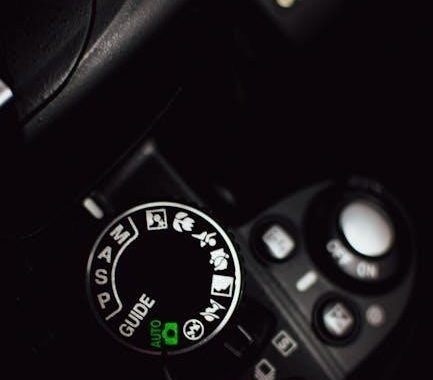The Nikon D300 is a high-performance DSLR camera designed for professionals and enthusiasts. It combines durability with advanced features, offering precise control over imaging settings.
Overview of the Camera’s Features
The Nikon D300 is a robust DSLR with a 12.3MP CMOS sensor and EXPEED image processing, delivering sharp images with excellent low-light performance. It features a weather-sealed magnesium alloy body, 51-point autofocus, and 6 fps burst shooting. The camera supports Nikon’s Creative Lighting System for advanced flash control and offers a 3-inch LCD screen for image review. With a wide range of manual controls and customization options, the D300 is designed for professionals and enthusiasts seeking precision and versatility in their photography.
Target Audience and User Levels
The Nikon D300 is tailored for advanced photographers and professionals, offering extensive manual controls and customization options. Its robust build and weather-sealing make it ideal for challenging environments, while its intuitive interface appeals to enthusiasts seeking to refine their skills. The camera’s feature set supports both creative and technical photography, catering to users who value precision and control. Whether for studio work or field photography, the D300 meets the demands of experienced shooters striving for high-quality results.
Camera Components and Accessories
The Nikon D300 includes essential components like the EN-EL3e battery and body cap. Accessories such as MB-D10 grip enhance functionality, while memory cards are sold separately.
Exterior Parts and Controls
The Nikon D300 features a durable magnesium alloy body with a mode dial on top for selecting shooting modes. The shutter release button is located on the top right, alongside command dials for adjusting aperture and shutter speed. On the back, the 3-inch LCD screen provides preview and playback functionality. The Live View button enables on-screen composition, while playback and delete buttons simplify image management. The multi-selector joystick allows for quick menu navigation and autofocus point selection. Memory card slots and battery compartments are conveniently located for easy access.
Interior and Additional Accessories
The Nikon D300’s interior houses a 12.3-megapixel CMOS sensor, delivering high-quality images. The optical viewfinder offers 100% frame coverage for precise composition. Dual memory card slots support both CF and MicroDrive storage. The EN-EL3e lithium-ion battery provides extended shooting sessions. Optional accessories include the MB-D10 battery grip for enhanced ergonomics and extended shooting. Additional gear like remote shutter releases, GPS units, and wireless transmitters expand functionality. These components and accessories ensure versatility for various photography needs, catering to both professionals and enthusiasts.
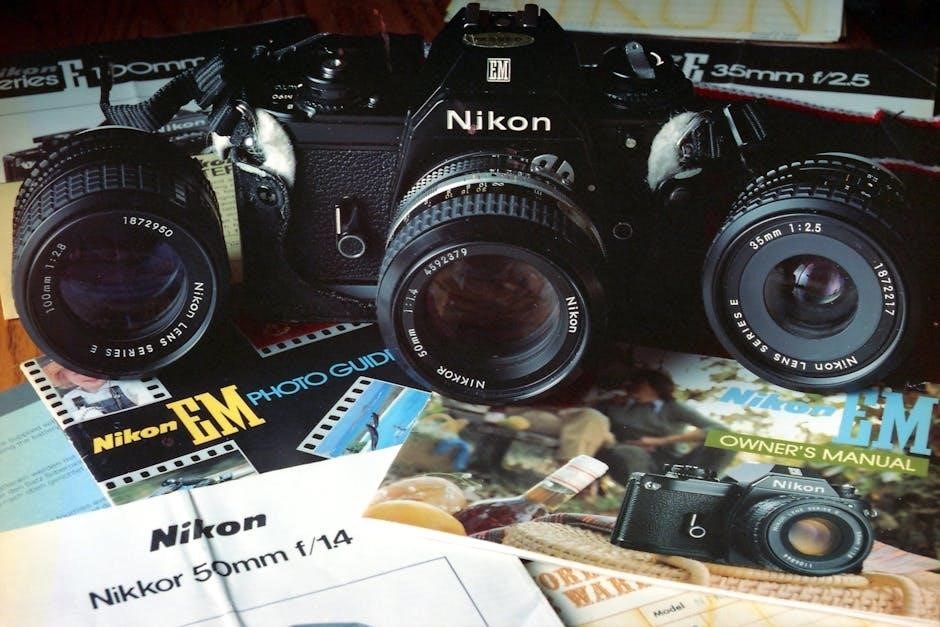
Understanding Camera Controls
The Nikon D300’s controls are designed for intuitive operation, allowing photographers to manage settings efficiently. From ISO adjustments to focus modes, these controls ensure precise image capture.
Top Controls and Dials
The Nikon D300’s top controls include the mode dial, offering shooting modes like Auto, P, S, A, M, and custom settings. The ISO button adjusts sensitivity, while the shutter release button activates the shutter. The exposure compensation button fine-tunes brightness, and the command dials adjust aperture, shutter speed, or ISO. These controls provide quick access to essential settings, enabling photographers to adapt to changing conditions efficiently while maintaining creative control over their shots.
Back and Side Controls
The Nikon D300’s back features a high-resolution 3-inch LCD screen for image review and menu navigation. The multi-selector allows for quick autofocus point selection and menu scrolling. The AF-On button activates autofocus, while the AE-L/AF-L button locks exposure and focus settings. The live view button enables live view mode for composing shots on the screen. On the sides, the camera includes HDMI, USB, and remote control terminals for expanded connectivity and functionality.
Shooting Modes Explained
The Nikon D300 offers multiple shooting modes, including Auto, Scene, Program, Aperture Priority, Shutter Priority, and Manual. These modes cater to different photography needs, ensuring flexibility and control for capturing diverse subjects and lighting conditions effectively.
Auto Modes for Beginners
The Nikon D300 features several Auto modes designed to simplify photography for beginners. The Auto Mode adjusts all settings automatically, while Portrait Mode softens backgrounds for sharp subject focus. Landscape Mode emphasizes depth and sharpness for scenic shots. Close-Up Mode optimizes settings for detailed macro photography. Sports Mode captures fast-moving subjects with faster shutter speeds. Night Portrait Mode balances flash with ambient light for low-light portraits. These modes allow newcomers to achieve professional results without manual adjustments, making them ideal for learning the basics of photography.
Manual and Semi-Manual Modes
The Nikon D300 offers advanced manual and semi-manual modes for precise control over photography settings. Aperture Priority Mode (A/Av) allows users to set the aperture, while the camera adjusts the shutter speed. Shutter Priority Mode (S/Tv) enables control over shutter speed, with the camera setting the aperture. Manual Mode (M) grants full control over both aperture and shutter speed. These modes are ideal for experienced photographers seeking creative freedom. The exposure compensation button fine-tunes brightness in semi-manual modes, ensuring optimal results in various lighting conditions.
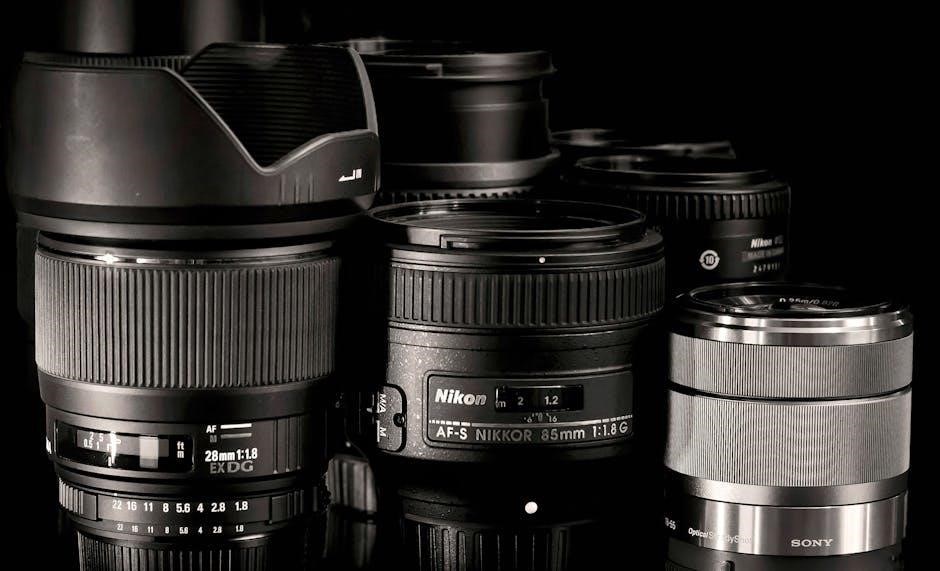
Focusing Systems
The Nikon D300 features an advanced 51-point autofocus system with 15 cross-type sensors, ensuring precise subject tracking and enhanced accuracy for professional-grade photography.
Autofocus Modes and Settings
The Nikon D300 offers multiple autofocus modes, including Single Servo AF (AF-S) for stationary subjects, Continuous Servo AF (AF-C) for moving subjects, and Manual Focus (MF). Users can customize AF settings via the menu, such as AF-C priority (release or focus) and focus tracking options. The 51-point AF system allows for dynamic area AF and 3D tracking, enhancing subject acquisition. Customization options enable tailoring AF behavior to specific shooting scenarios, improving accuracy and responsiveness for professional-grade photography.
Manual Focus Techniques
Manual focus on the Nikon D300 allows precise control over focusing. To engage manual focus, switch the lens to MF mode or use the camera’s menu. Techniques include using the electronic rangefinder for confirmation and enabling live view for zoomed-in focusing; For critical focus, use a tripod and disable vibration reduction. Steady hand placement on the lens and careful breathing ensure stability. This method is ideal for macro, portrait, or low-light photography, offering creative control and accuracy when autofocus may struggle.
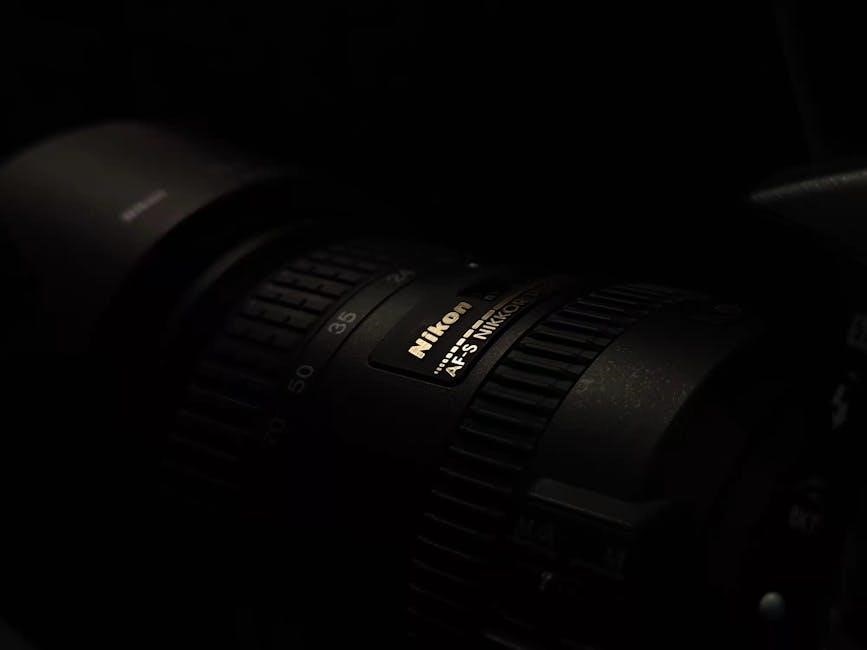
Image Quality and Settings
The Nikon D300 offers customizable image quality settings, including resolution, compression, and color modes. Adjustments enable photographers to optimize output for specific needs, ensuring superior results.
Image Formats and Compression
The Nikon D300 supports multiple image formats, including RAW, TIFF, and JPEG. RAW files capture maximum image data for post-processing, while JPEG offers compressed files for convenience. The camera also provides compression options for RAW files, such as lossless and lossy compression, to reduce file sizes without compromising quality. Additionally, JPEG compression levels (Fine, Normal, Basic) allow users to balance file size and image quality according to their needs, ensuring flexibility for different photography scenarios.
Color Modes and White Balance
The Nikon D300 offers various color modes, including Standard, Neutral, Vivid, Monochrome, Portrait, and Landscape, allowing users to customize image processing. White balance settings like Auto, Daylight, Shade, Fluorescent, Incandescent, Flash, and Cloudy ensure accurate color reproduction in different lighting conditions. Custom white balance can also be set using a gray card or white object. These features enable photographers to enhance creativity and achieve precise control over color tones and balance for professional-grade results.

Exposure Control
Exposure control on the Nikon D300 allows precise adjustment of aperture, shutter speed, and ISO to achieve optimal image brightness. It ensures flexibility in various lighting conditions.
Metering Modes and Exposure Compensation
The Nikon D300 offers three metering modes: 3D Color Matrix II, Center-Weighted, and Spot. These modes help measure light accurately for precise exposures. Exposure compensation allows adjusting the exposure value (EV) by ±3 stops in 1/3 or 1/2-stop increments. This feature is useful for fine-tuning images in challenging lighting conditions. The camera also provides an Auto-Bracketing option for capturing multiple exposures at varying EV levels. These controls ensure flexibility and creativity in achieving desired exposure results, making the D300 versatile for various photography scenarios.
Bracketing and Flash Photography Basics
The Nikon D300 supports exposure bracketing, allowing up to three frames at varying exposure levels. This is ideal for capturing high dynamic range (HDR) images. For flash photography, the camera offers a built-in flash and compatibility with external Speedlights. The flash modes include Front-Curtain Sync, Slow Sync, and Rear-Curtain Sync, providing flexibility in lighting effects. Flash compensation adjusts the flash output, ensuring balanced lighting in your photos. These features make the D300 versatile for both natural and artificial lighting scenarios, enhancing creativity and control over your images;
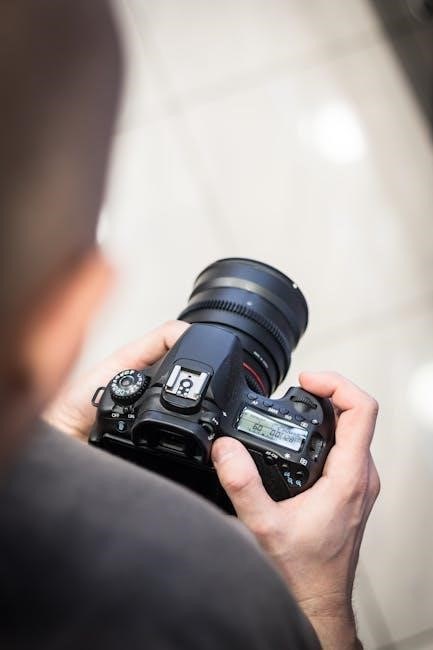
Using Flash Photography
The Nikon D300 features a built-in flash and supports external Speedlights for enhanced lighting control. It offers modes like Front-Curtain Sync and Rear-Curtain Sync for creative effects, ensuring versatility in various lighting conditions.
Built-in Flash and External Flash Options
The Nikon D300 is equipped with a built-in flash, offering convenient lighting for various situations. It provides a guide number of 12/39 (m/ft) and covers a wide-angle lens up to 18mm. For enhanced flexibility, the camera supports external Speedlights like the SB-600 and SB-800, which offer more power and creative control. Wireless flash operation is also possible, allowing multiple external flashes to be triggered remotely. This system ensures versatility in lighting setups, catering to both casual and professional photographers.
Flash Sync Modes and Compensation
The Nikon D300 offers multiple flash sync modes, including Front-Curtain Sync, Rear-Curtain Sync, and Slow Sync, each tailored for specific effects. Front-Curtain Sync freezes motion with the flash, while Rear-Curtain Sync creates motion trails. Slow Sync blends ambient and flash light for natural results. Flash compensation allows adjusting the flash output by ±3 EV in 1/3 EV increments, ensuring balanced lighting. These features enable photographers to achieve desired effects in various lighting scenarios, enhancing both portraits and dynamic images.
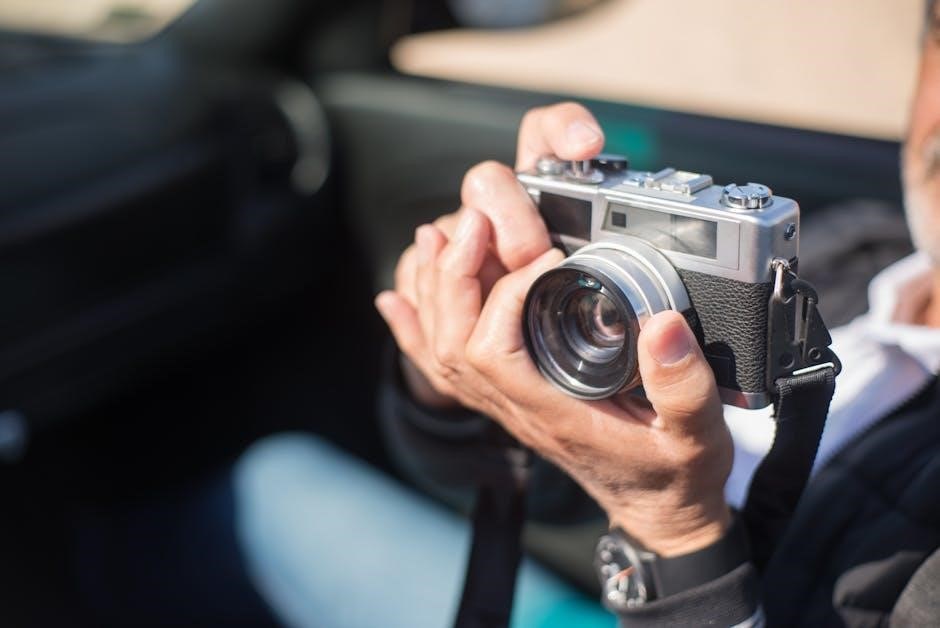
Custom Settings and Personalization
The Nikon D300 allows users to tailor camera functions to their preferences, enabling customization of buttons, exposure modes, and focusing systems for enhanced control and workflow efficiency.
Customizing Camera Functions
The Nikon D300 offers extensive customization options, allowing users to tailor camera functions to their preferences. Assign custom roles to buttons like the AE-L/AF-L for exposure or focus locking. Adjust autofocus settings to prioritize specific focus points or modes, enhancing sharpness in various shooting scenarios. Customize metering modes to suit lighting conditions and optimize exposure control. These personalizations streamline workflow and improve efficiency, enabling photographers to adapt the camera to their unique needs. Regular experimentation with settings ensures optimal performance in diverse photographic situations.
Configuring Autofocus and Metering
The Nikon D300 allows precise configuration of autofocus and metering systems. Choose from Single Servo or Continuous Servo AF modes for static or moving subjects. Select AF-area modes like Single Point, Dynamic Area, or Auto Area for tailored focus control. For metering, options include 3D Color Matrix II, Center-Weighted, and Spot metering, each suited for different lighting conditions. Adjust these settings to optimize focus accuracy and exposure, ensuring sharp images with balanced lighting. Experiment with configurations to match your shooting style and scene requirements for consistent results.
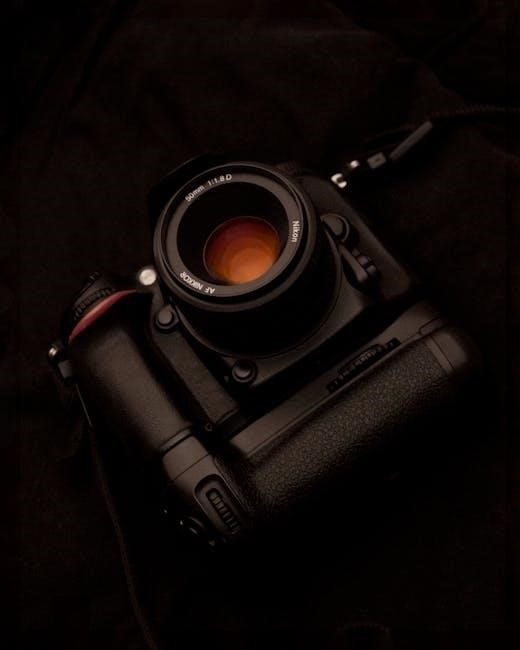
Menu Navigation
Navigate the Nikon D300’s menu using the multi-selector and OK button. The menu is divided into clear sections like Shooting, Playback, and Setup for easy access. Customize settings to streamline your workflow and enhance shooting efficiency.
Playback Menu Options
The Playback Menu on the Nikon D300 offers tools for managing and enhancing your images. Options include deleting photos, rotating images, and zooming in for detailed inspection. Slideshow allows you to view photos in sequence, while Hide lets you conceal unwanted files. Display Options customize how images appear, such as showing histograms or focus points. Use the multi-selector and OK button to navigate and apply settings efficiently, ensuring your workflow remains smooth and organized. These features help you review and manage your shots effectively.
Shooting Menu and Custom Settings Menu
The Shooting Menu on the Nikon D300 provides options to adjust image quality settings, such as Image Size, Quality, White Balance, and ISO Sensitivity. The Custom Settings Menu allows users to tailor camera functions to their preferences, including autofocus settings, metering modes, and bracketing options. These menus enable precise control over shooting parameters, ensuring optimal results in various photography scenarios. By exploring these settings, photographers can customize the D300 to align with their creative vision and shooting style.
Memory Cards and Storage
The Nikon D300 supports CF cards, including Type I and Type II, with capacities up to 8 GB. Proper storage and handling ensure data integrity and longevity.
Always format cards in the camera to maintain compatibility and prevent data loss. Use high-quality cards for reliable performance and optimal image storage.
Supported Card Types and Capacities
The Nikon D300 is compatible with CompactFlash (CF) cards, including Type I and Type II. It supports cards with capacities up to 8 GB. For optimal performance, use high-quality CF cards from reputable manufacturers. The camera does not support SD or xD cards. Ensure cards are formatted in the D300 to maintain compatibility and prevent data corruption. Using oversized cards beyond 8 GB may result in limited functionality or recognition issues. Always choose cards with sufficient storage for your shooting needs.
Formatting and Data Management
Formatting memory cards in the Nikon D300 ensures optimal performance and prevents data corruption. Use the camera’s menu system, specifically under the Setup Menu, to format cards. Always format cards in the camera, not on a computer, to maintain compatibility. After formatting, the card will only contain the necessary folders for storing images. Regularly backing up your data is crucial to avoid losing important files. Use high-capacity cards for extended shooting sessions and avoid filling cards to full capacity to maintain smooth write speeds. Proper data management helps ensure efficient workflow and image organization.
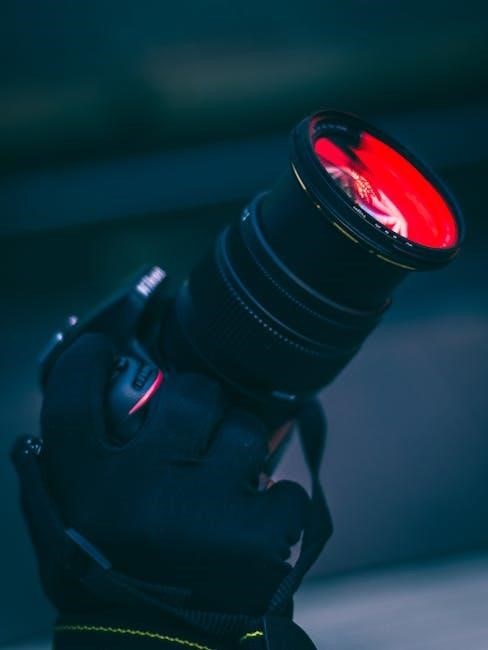
Care and Maintenance
Regular cleaning and maintenance ensure the Nikon D300 performs optimally. Use a soft cloth to wipe the exterior and lens. Avoid harsh chemicals. Store the camera in a dry, cool place away from direct sunlight. Use a UV filter to protect the lens from scratches. For sensor cleaning, use a blower or have it professionally serviced. Proper care extends the camera’s lifespan and maintains image quality.
Cleaning the Camera and Sensors
Regularly clean the Nikon D300 to maintain performance. Use a soft, dry cloth to wipe the camera body and lens. For stubborn smudges, lightly dampen the cloth with water. Avoid harsh chemicals or tissues, which may scratch surfaces. Clean the image sensor using a blower or brush to remove dust. For stubborn particles, use Nikon-approved wet cleaning swabs. Always turn off the camera before cleaning and handle it carefully to prevent damage. Clean the viewfinder with a microfiber cloth to ensure clear visibility.
Updating Firmware and Software
Regular firmware updates ensure optimal performance for your Nikon D300; Download the latest firmware from Nikon’s official website and follow the installation guide. Connect your camera to a computer using the provided USB cable. Use Nikon Software or the Camera Control Pro to update. Ensure the battery is fully charged before starting. Avoid disconnecting or turning off the camera during the update. After completion, restart the camera to apply the changes. Always verify updates from Nikon’s official sources to prevent unauthorized software installations.
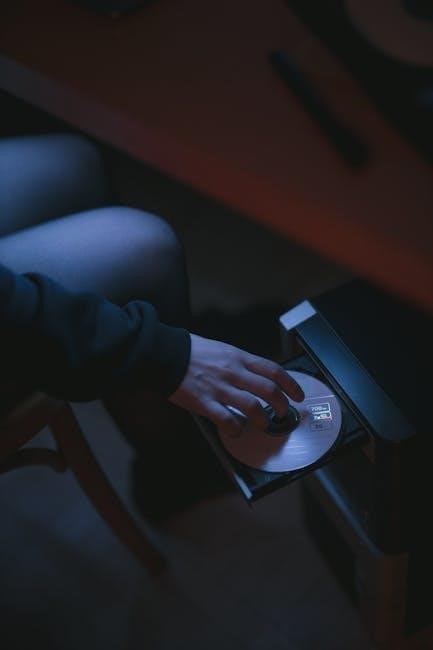
Troubleshooting Common Issues
Identify symptoms, check settings, and consult the manual for solutions. Common issues include error messages, shutter malfunctions, or autofocus problems. Resetting settings often resolves these.
Resolving Error Messages
The Nikon D300 displays error messages to indicate specific issues. Common errors include “ERR” for unsupported file types and “FORC” for corrupted memory cards. To resolve these, turn the camera off and on, check settings, or reformat the memory card if necessary. For “ERR” messages, ensure the file format is compatible. If issues persist, refer to the user manual or contact Nikon support for further assistance. Regularly updating firmware can also prevent unexpected errors. Always use genuine accessories to avoid compatibility problems.
Checking and Maintaining Camera Performance
To ensure optimal performance, regularly clean the camera’s sensor and lens to prevent dust and smudges. Check the firmware version and update it if necessary for improved functionality. Inspect the mirror and viewfinder for damage or debris. Use only genuine Nikon accessories to maintain compatibility. Periodically review camera settings to ensure they are configured correctly. For best results, store the camera in a dry, cool environment and avoid extreme temperatures. Regular maintenance helps preserve image quality and ensures reliable operation.
Best Practices for Mastering the D300
Mastering the Nikon D300 requires practice and understanding its features. Regularly review settings, experiment with modes, and analyze results to refine your skills. Keep experimenting!
To fully master the Nikon D300, practice regularly and explore its advanced features. Familiarize yourself with ISO, aperture, and shutter speed adjustments for optimal results. Always clean and maintain the camera to ensure longevity. Review your shots to identify areas for improvement. Experiment with different shooting modes and custom settings to enhance your photography skills. Keep the firmware updated for the latest performance improvements. Carry essential accessories like extra batteries and memory cards. By following these tips, you’ll unlock the D300’s full potential.
